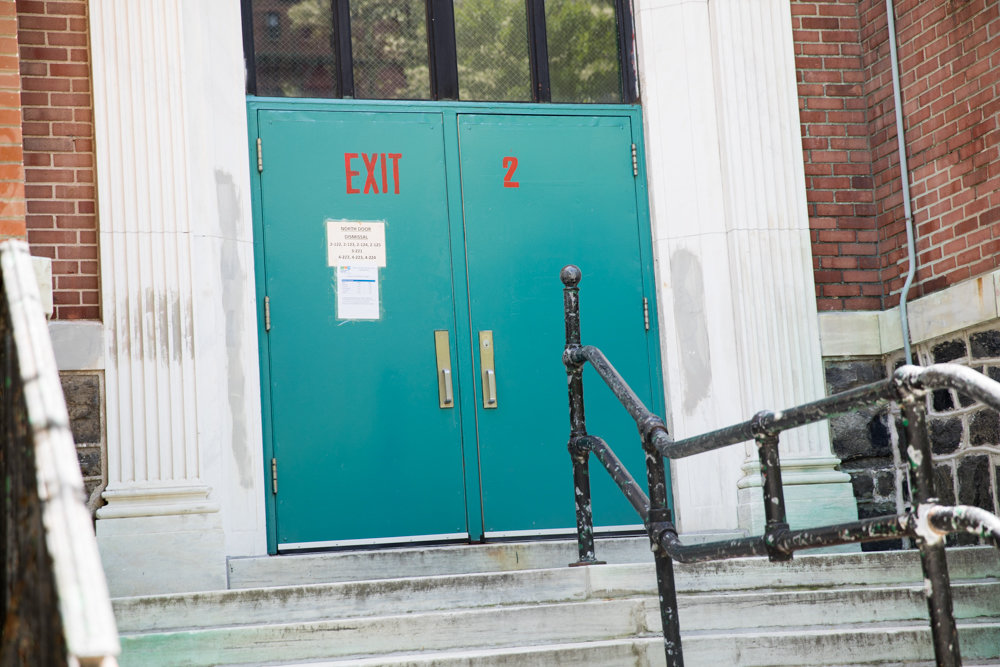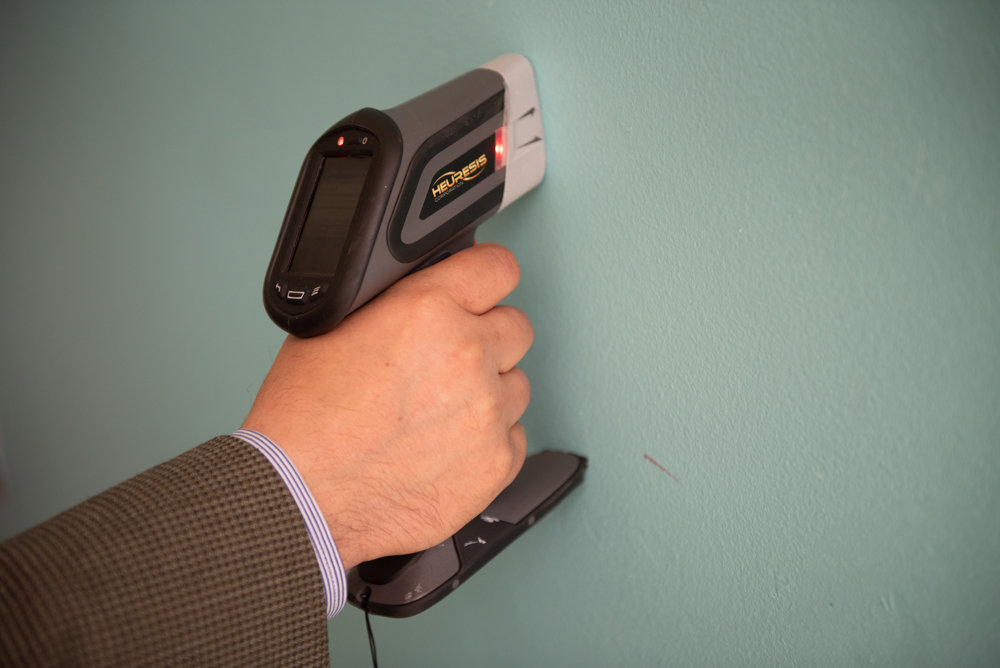Tests paint grim picture of lead in city schools
Lead-based paints have been banned since the 1970s, but many of New York City’s schools date back long before that. That means paint containing the toxic material that could damage the brain and other vital organs could still be on the walls of many classrooms, even if it’s a few coats below the surface.
Just how many schools, however, was the real question — one that was answered this past summer when testing revealed deteriorating lead-based paint in more than 900 classrooms across 300 schools, including P.S. 81 Robert J. Christen School.
The tests came after a WNYC report found deteriorating lead-based paint in four schools across the city. That prompted the education department to declare it would repair all deteriorating paint by the first day of school Sept. 5.
“Deteriorating” lead paint refers to paint that is chipped or peeling, leading to loose paint chips and, more dangerously, lead dust.
Lead paint dust presents the largest risk to young children, said Dr. Morri Markowitz, director of the Montefiore Children’s Hospital lead poisoning treatment and prevention program. That’s because lead dust from damaged paint falls onto classroom floors and desks, where it can get on shoes, toys, school supplies and hands.
“As an infant, as soon as you find your hands, they’re in your mouth all the time,” Markowitz said. But while most kids outgrow hand-to-mouth exploration by the time they reach school age, there are exceptions.
Nail-biters and kids with persistent thumb-sucking habits could be more susceptible to lead dust, allowing it to get it in their mouths. Even older students who are prone to nail-biting or pen-chewing are at risk for getting lead dust in their mouths and systems.
Children with developmental delays also are more likely to put their hands or other objects in their mouths.
Yet simply being in a room with lead paint is not enough to cause lead poisoning, Markowitz said. Lead dust or paint chips have to first be ingested.
Repairing deteriorating lead-based paint requires a coating of something called an encapsulant. These are specially formulated polymers or epoxies that form a seal over chipped or peeling paint. This prevents further deterioration and, more importantly, prevents lead dust from falling.
Encapsulants are a good short-term solution, Markowitz warns, but they’re just that: short-term.
“It’s good as long as encapsulation keeps the surface sealed,” Markowitz said. “If someone puts a nail in, hangs a picture, and then takes the nail out, that’s now an entry point for lead dust into the room.”
Victoria Ezarbeukh, former vice president of the P.S. 81 parent association who also has a fourth-grader at the Riverdale Avenue school, said she was satisfied by the school’s response to the presence of lead-based paint. In addition to the education department’s letter, Ezarbeukh received a letter from principal Anne Kirrane, which identified which classrooms were affected and explained how repairs would be completed by the beginning of the school year.
“She assured us that everything would be fine,” Ezarbeukh said. “She will do everything for the kids’ safety. They think of her more like grandma than a principal. She will do everything.”
Symptoms of lead poisoning include intestinal symptoms — like constipation, vomiting or stomach aches — and behavioral issues, like an inability to sit still or acting aggressively. None of those symptoms are exclusive to lead poisoning, though, Markowitz said, and it’s hard to attribute symptoms to lead poisoning unless children have a fairly high level of lead in their blood. Children who may have been exposed to lead should get a blood test.
Both city council Speaker Corey Johnson and council education committee chair Mark Treyger publicly called for higher standards of lead testing in city schools. For them, testing classrooms only for deteriorated lead paint was not enough — hallways, auditoriums and other common spaces also should be tested.
Markowitz agreed, saying that while classrooms are an excellent starting point for lead testing, it shouldn’t be the end point either.
“You don’t stop, you start with these classrooms,” Markowitz said. “Dust doesn’t stay in the classroom, it gets tracked by kids into other rooms, into hallways, and they’re possibly taking it home on their shoes and clothes.”
The current protocol of directing school custodians to check classrooms for peeling paint is not enough, Markowitz said. He believes parents and teachers should be encouraged to check out classrooms for potential hazards as well.
“The custodian has that responsibility three times a year,” the doctor said. “That can be long time interval between, ‘It looks OK,’ ‘It doesn’t look OK,’ and ‘Let’s postpone fixing things until the end of the year.’”
“If the school determines that there’s deteriorated paint in a classroom with little kids with hand-to-mouth activity as a normal activity — and you’ve only discovered that at the end of the school year — you have the potential for months, the semester, the whole school year that kids have been exposed.”















